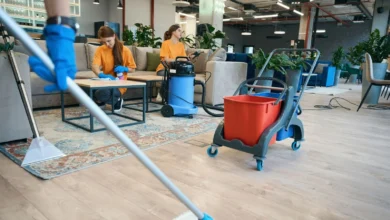Why AC Hose Quality Matters: How Choosing Premium Materials Impacts System Performance

In the world of air conditioning systems, one of the often overlooked yet critical components is the AC hose. The AC hose is an integral part of the system that carries refrigerants and helps regulate pressure and temperature to ensure the air conditioner operates efficiently. However, not all AC hoses are created equal. The materials used to manufacture these hoses play a significant role in the system’s performance, longevity, and overall efficiency.
The Role of an AC Hose in the System
Before diving into the specifics of hose quality, it’s essential to understand the primary role that AC hoses play in an air conditioning system. AC hoses connect various components of the air conditioning system, such as the compressor, condenser, and evaporator, allowing the refrigerant to flow between them.
These hoses are designed to withstand high pressures and temperatures as they transport refrigerants, which change from gas to liquid and vice versa in the process of cooling air. The hoses also help maintain the necessary pressure levels within the system, ensuring the air conditioner operates efficiently and effectively.
The Impact of Material Quality on AC Hose Performance
The quality of the materials used in AC hoses has a direct impact on the overall performance of the system. High-quality materials ensure that the hose can endure the high pressures and temperatures without deteriorating over time, leading to fewer breakdowns and a longer-lasting system.
Here are some key factors to consider when assessing the quality of AC hoses:
1. Durability
Premium hoses made from high-grade materials such as braided steel, synthetic rubber, and thermoplastic polymers offer superior durability. They are less prone to cracking, wear, and tear, even under extreme temperature fluctuations. This durability ensures that your AC system remains operational for a longer period, minimizing the need for repairs and replacements.
2. Resistance to Environmental Elements
AC hoses are often exposed to harsh environmental conditions, such as UV rays, ozone, moisture, and extreme temperatures. High-quality hoses are designed with resistance to these elements, which prevents them from degrading prematurely. Low-quality hoses, on the other hand, may weaken under such conditions, leading to leaks or cracks.
3. Flexibility
Premium materials offer greater flexibility, which allows the hose to bend and stretch without compromising its structure. This flexibility is essential for ease of installation and ensures that the hose does not kink or get damaged during the setup process.
Common Issues Caused by Low-Quality AC Hoses
Choosing low-quality hoses for an AC system can result in various issues that can drastically reduce the efficiency and lifespan of the unit.
1. Leakage
One of the most significant problems caused by poor-quality AC hoses is leakage. Inferior materials used in the construction of the AC hose may degrade over time, leading to cracks or weak spots. When an AC hose begins to leak, the refrigerant escapes, reducing the system’s cooling capacity and causing an increase in energy consumption. This can also lead to a decrease in overall system efficiency and may require costly repairs or replacements.
2. Pressure Drops
A low-quality hose may not maintain the proper pressure within the system, leading to pressure drops. This can cause the air conditioning unit to work harder than necessary, reducing its overall efficiency and increasing energy costs.
3. Premature Wear and Tear
Cheap hoses are more likely to wear out quickly, requiring frequent replacements and repairs. This leads to increased maintenance costs and downtime for the system.
Types of Materials Used in AC Hoses
AC hoses come in a variety of materials, each with its advantages and drawbacks. The choice of material plays a significant role in the hose’s performance and longevity.
1. Rubber
Rubber hoses are commonly used in air conditioning systems due to their flexibility and cost-effectiveness. However, they may not offer the same durability and resistance to environmental factors as other materials.
2. Steel-Braided Hoses
Steel-braided hoses are known for their strength and durability. They offer superior resistance to pressure and environmental elements, making them ideal for high-performance AC systems. These hoses are often used in commercial and industrial applications.
How High-Quality AC Hoses Prevent Leakage and Pressure Drops
Premium AC hoses are designed to prevent leakage and pressure drops by maintaining their structural integrity over time. The high-grade materials used in these hoses ensure they can withstand extreme conditions without deteriorating.
For example, steel-braided hoses are highly resistant to punctures and tears, making them less likely to leak. Additionally, thermoplastic hoses are less likely to swell or become brittle, ensuring consistent pressure within the system.
Conclusion
In conclusion, the quality of AC hoses plays a pivotal role in the overall performance, efficiency, and longevity of air conditioning systems. Premium materials such as steel braids, thermoplastics, and high-grade rubbers ensure that AC hoses can withstand the demands of high-pressure systems and harsh environmental conditions. By investing in quality hoses, you prevent common issues such as leakage, pressure drops, and system failure, leading to reduced maintenance costs and improved system performance.
FAQs
1. What are the signs that an AC hose is failing?
Common signs of a failing AC hose include visible cracks, leaks, or bulges in the hose, as well as a drop in cooling performance or a rise in energy consumption.
2. Can I use any AC hose for my system?
It’s important to choose a hose that is compatible with your system’s pressure and refrigerant type. Always consult the manufacturer’s recommendations for the correct hose specifications.
3. How long do AC hoses typically last?
High-quality AC hoses can last anywhere from 10 to 20 years, depending on usage and environmental conditions. Low-quality hoses may wear out much faster.
4. Are steel-braided hoses better than rubber hoses?
Steel-braided hoses are more durable and offer superior resistance to pressure, wear, and environmental factors. They are generally a better option for high-performance systems, while rubber hoses may be suitable for less demanding applications.




